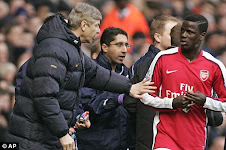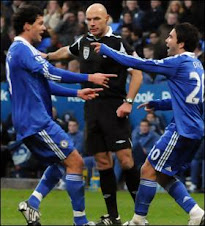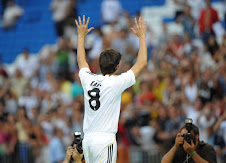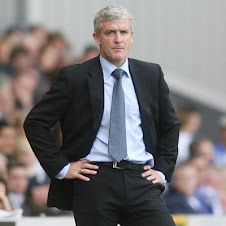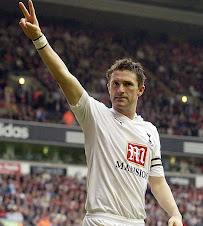Case study: Chelsea 1-0 Man Utd, Sunday 8th November 2009
Football is not chess.
Formations and tactics don’t always win games, which is probably the first of many limitations of this blog. Today was one of those days – the only goal of the game came from a refereeing decision that was, frankly, incorrect. However, since this is a blog focussing upon tactics, we shall try to ignore that error of judgement, and instead look at the game as a whole.
It’s hard to find fault with Sir Alex Ferguson today. Look at the match statistics and it’s difficult to say that United did not have the better of the game. 61% of the possession in the second half (the first half was 50-50), 12 attempts on goal to Chelsea’s eight, seven corners to Chelsea’s none. Away from home. Yes, these facts mean nothing if not converted into goals, but a manager can only hope to dominate possession and create more chances – both of which United did. The poor shooting from United today was not Ferguson’s fault, and from a purely tactical point of view, United dominated.
Chelsea got lucky today – if I were a Chelsea fan, I would be hoping Ancelotti does not see this as a victory for a tactical shape that didn’t work.
1) The diamond formation is obvious in its weakness – width in midfield (a). This can be overcome if the midfield players are comfortable drifting to wide areas – as happened when Ancelotti played a similar style at Milan – Seedorf naturally drifted to the left side, and Gatusso had a tendency to come to the right. Even Kaka could float to the right hand side, especially when he became used to the narrow 4-2-2-2 Brazil were playing, where he was inclined to provide right-sided width.
Unfortunately for Chelsea, Ballack, Lampard and Deco are all very much central midfielders– and all three have spent a fair amount of time in their career with their club’s (Chelsea; Leverkusen/Bayern; Porto) midfield built around them. None are used to drifting to the flanks to keep the shape in the side. Meanwhile Essien, in the holding role, must stay central.
Chelsea do have two players who naturally come wide – Joe Cole and Florent Malouda, and Malouda’s excellent displays this season have provided Chelsea with that missing quality. It was disappointing to see him benched today, and if Chelsea start a home Premiership game again with Essien-Lampard-Ballack-Deco it will be very surprising, especially with Cole fit again and pushing for a starting place.

2) The first half was characterized by the battle on United’s left, Chelsea’s right (b). The fact that Valencia remained wide (c) whilst Giggs tucked in (d) meant the obvious area of space for both sides to attack was down the same side.
(Valencia's advanced, wide positioning was particularly frustrating for Ashley Cole, who got forward a lot less than his opposite number Patrice Evra, as the chalkboard on the left demonstrates.Evra attempted 20 more passes than Cole throughout the game (and in more advanced positions) a significant difference and all the more surprising considering considering Evra was the away player, and Cole the home player.)
Whereas United’s attacks often seemed to be primarily constructed to shift the ball out to Evra on the left, Ivanovic on Chelsea’s right was very much a last resort – one could almost hear the groan around Stamford Bridge every time Chelsea’s creative players were forced to come deep and shift another ball out to the Serbian, who is a good player, but not a good attacking player. It is incredible that Chelsea have four players in their squad who primarily play at right back (Bosingwa, Ivanovic, Belletti, Ferreira) and yet as soon as the first-choice becomes injured, they are suddenly stuck for any inspiration in an attacking sense from that position.
This in mind, it would have been entirely sensible to bring on Jon Obi Mikel for Ivanovic, and shift Michael Essien to right-back, where he excelled a couple of seasons ago (remember, Chelsea started him in their Champions League final against United there). Mikel would have done a decent job in the holding role, and Essien, an excellent attacking force, would have seen more of the ball than any other player on the pitch and would have been a genuine attacking threat. In the end, Ivanovic constantly underhit crosses and United were happy to let him have the ball.
It was also surprising that Nicolas Anelka wasn't instructed to move to the right when Chelsea didn't have the ball (e) which would have made it more difficult for Evra to go forward.
3) It's always surprising how rarely managers change things at half-time if their side aren’t playing well. It’s the only time they can inform and instruct their whole side to adapt to the changes, and with two clear problems (width in midfield and the lack of a right-back comfortable on the ball) that could have been rectified by a substitution, it was strange to see no changes. Yes, they went on to win the game, but unless Ancelotti was relying on a goal which came because of two separate incorrect refereeing decisions, it is hard to argue why he was right to keep things as they were. I’m always tempted to believe that managers are reluctant to change things at half-time because they don't want to appear as if they got things wrong from the outset, either in terms of tactics or personnel. Sam Allardyce, certainly not a man who cares about his public image, yesterday made two substitutions when 0-1 down at half-time, and brought on two forwards – one claimed two goals, the other claimed an assist., and Blackburn won 3-1, playing a completely different shape to their first half line-up.

4) From United’s point of view, I thought they did rather well. Their best player was Anderson, whose excellent runs only failed to result in chances/goals because of poor balls from Rooney and Valencia. Anderson was playing at the top of a midfield triangle for United, and it seems this is his best role. He came to the club with a reputation as an attacking midfielder, but all too often he has been deployed in a deeper role where he appears uncomfortable and ineffective. Today his main defensive job was to pick up Essien (much as Clarence Seedorf did to Xabi Alonso in midweek) and he did well.
This was a rare occasion where United played 4-5-1, and also a rare occasion, away at a big 4 club, where the primary role of the foremost attacking central midfield player was still a defensive one (if that makes sense), so it was perfect for Anderson. But with United (a) generally playing 4-4-2 and (b) in the absence of Cristiano Ronaldo, needing goals from wherever possible (Anderson has scored one goal in his United career) – one suspects Anderson needs either a change of shape in the United side, or a change in club, to fulfil his potential. Still only 21, he’s been written off prematurely by many, but he showed today he has the intelligence to be more than the mere run-and-foul player he often appears.
5) Wayne Rooney played well as a lone forward, as he always does. The only thing that let him down was his poor distribution - had he played in Anderson when the Brazilian was unmarked in the first half, United surely would have led. His movement is excellent and this compensates for his lack of height, traditionally a requirement for a lone forward. Fabio Capello and Franco Baldini were in the stand today and would both have been impressed. If Emile Heskey goes the whole season as a substitute, it will be difficult for him to remain in England's starting line-up, and with Joe Cole and Owen Hargreaves - certainly two of England's best eleven players - set to be available soon, it would not be surprising if Rooney plays this role in South Africa next summer.
Lessons:
- With a diamond midfield, at least one player in the four must be comfortable with drifting wide.
- It is imperative at home that both your full-backs are good on the ball.
- If you're playing against a side with one full-back not good on the ball, you can play a lopsided shape and allow that player the ball. United's system was similar to Tottenham's suicidal system last week at Arsenal. The difference? Arsenal had Sagna at right-back, good technically and who bagged two assists. Chelsea had Ivanovic, who is poor on the ball, and caused no danger.
















